#Sattva
Text
The Rascals - Sattva (1968)
If Once Upon a Dream was supposed to be the Rascals' Sgt Pepper's, then Sattva is Within Without You. Although George's song never broke into a wonderful soul section in the middle of his tune. Kind of reminds me of Traffic's fist LP. Very cool stuff, and the Rascals were actually playing the sitar, tamboura and tabla.
All the colors melting softly at my feet
24 notes
·
View notes
Text
Joseph Campbell, THE MYSTERY NUMBER OF THE GODDESS

The Indian (Sānkhya) philosophers recognized as arising three “qualities or characteristics” (guṇas), through the interrelation of which all of “nature” (prakṛti) was seen as motivated; namely, “inertia, mass, or heaviness” (tamas); “energy and vitality” (rajas); and the “harmony or clarity” (sattva) of any balanced relationship of the opposed two. In Pythagorean terms, the same three would correspond, respectively, to (1) the “unlimited,” (2) the “limiting,” and (3) the “harmony” or “fitting together” (harmonia) of any “beautiful order of things” (kosmos), whether as a macrocosm (the universe), microcosm (an individual), or mesocosm (ideal society or work of art). And the number representative in that system of such a visible order is 4.

The Pythagorean tetraktys, viewed as an upward-pointing triangle built of 9 points with a tenth, as bindu, in the center, suggests an Indian tantric diagram (yantra) symbolic of the female power in its spiritually alluring role recognized by Goethe in the last two lines of his Faust: “Das Ewig-Weibliche/Zieht uns hinan!”

The trinity here is not of three male divinities with the Virgin then as a feminine fourth but of the classical three Graces with Apollo as a masculine fourth. Both the names and the postures of the Graces tell of the qualities of their influence: (1) Thalia (“Blooming, Abundance”) unites and relates her opposed companions; (2) Euphrosyne (“Mirth, Festivity, Good Cheer”) moves away from the God to the descent, ninefold, of the Muses; while (3) Aglaia (“Splendor, Beauty, Triumph, Adornment”) confronts him, returning to source. Pico and Ficino revered these three as an exemplary triad archetypal of all the others of classical myth. In Pico’s words, “He that understands profoundly and clearly how the unity of Venus is unfolded in the trinity of the Graces, and the unity of Necessity in the trinity of the Fates, and the unity of Saturn in the trinity of Jupiter, Neptune, and Pluto, knows the proper way of proceeding in Orphic theology.” For as Edgar Wind points out in commenting on this passage, “it was an axiom of Platonic theology that every god exerts his power in a traidic rhythm.”
#legend of zelda#zelda#twilight princess#goddesses#group of three#farore#nayru#pythagoras#gunas#neoplatonism#marsilio ficino#muses#nine muses#three graces#greek mythology#greek gods#apollo#joseph campbell#great goddess#hinduism#cosmos#harmony#sattva#goddess hylia#hylia#hylian
2 notes
·
View notes
Text


With Chise and Sattva from the Iconic House of Ninja
3 notes
·
View notes
Text
Fueling Wellness: Embracing the Power of a Nourishing Diet
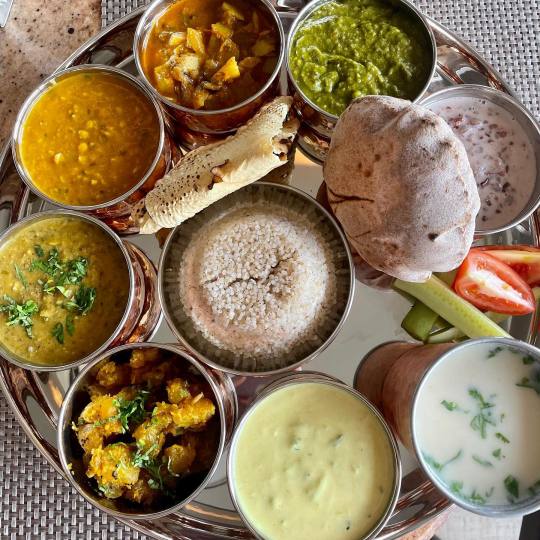
Our bodies thrive on the nutrients we consume, shaping our vitality and resilience against illnesses and inflammation. A wholesome diet not only energizes us throughout the day but also fuels growth, repairs, and fortifies our strength. The key lies in a balanced diet, easily digestible and brimming with life force—Prana. Discover the richness of our Garhwali Thali, meticulously crafted by our expert chefs, packed with goodness and superfoods to elevate your well-being.
Please visit: www.modiretreat.com
#yoga#food#wellness#ayurveda#indianfood#healthyfood#rishikeshdiaries#rishikesh#india#lifestyle#prana#vegetarian#sattvic#sattva#garhwali#uttarakhand
0 notes
Text
From Nourishment to Consciousness: The Ayurvedic Path of Transformation
In the heart of Ayurvedic wisdom lies a profound understanding of life's interconnectedness, where the food we eat does more than just fuel our physical bodies—it shapes our thoughts, emotions, and spiritual well-being. This ancient science teaches us that the journey of food, from ingestion to its final transformation into Chitta, is a sacred process that influences our consciousness and, ultimately, our connection to the universe.
The Sevenfold Path of Digestion
Ayurveda outlines a meticulous process of transformation that food undergoes within the human body, described in seven stages. Each stage, lasting approximately five days, refines the food further, transitioning from physical matter to a subtler form of energy. This journey begins with Rasa (nutritive fluid) and passes through stages including Rakta (blood), Mamsa (muscle), and Meda (fat), reaching Shukra (reproductive tissue), and eventually culminating in the formation of Chitta.
Chitta: The Mirror of the Soul
Chitta, often described as the mirror of the heart or the canvas of the mind, represents the pinnacle of this transformation. More subtle than the intellect (Buddhi), Chitta is a spiritual substance that reflects the essence of our being and our consciousness. It is here, in this refined state, that the food's journey concludes, but its influence on our being begins anew.
The Power of the Guna
The qualities of the food we consume—its Gunas—play a crucial role in shaping our consciousness. Ayurveda identifies three primary Gunas: Sattva (purity), Rajas (activity), and Tamas (inertia). Foods imbued with Sattva, such as fresh fruits, vegetables, and grains, promote clarity, serenity, and a deep connection to the spiritual self. Conversely, foods characterized by Rajas or Tamas can cloud the mind, stirring restlessness or dullness, and distancing us from our true nature.
The Transformation of Consciousness
When we understand that Chitta is more subtle than our intellect, we begin to see how our diet directly influences our thoughts and actions. If the food's inherent Gunas are in harmony with Sattva, they lead to a purified Chitta, fostering a consciousness clear of disturbances. This clarity allows us to perceive the world and ourselves with profound insight and compassion, empowering us to act with intention rather than being swayed by the whims of our lower nature.
Conversely, when our diet is dominated by Rajasic or Tamasic foods, our Chitta becomes clouded. The mirror of our heart no longer reflects our true essence but is obscured by the turbulence of unrefined desires and emotions. Our thoughts and actions then become a mere reaction to the Gunas of the digested food, distancing us from our higher purpose and spiritual path.
The Sattvic Shift: A Journey to Clarity
Starting a Sattvic diet is akin to setting forth on a spiritual pilgrimage. Within 40 days, the transformation is remarkable. The body and mind begin to realign with the natural rhythms of the universe. This period is not just about abstaining from certain foods but embracing a lifestyle that nurtures purity, balance, and harmony within and without.
As the Sattvic essence of the food ingested permeates the body, it subtly works to purify the seven stages of digestion, refining the energies and guiding them towards the creation of a purified Chitta. This Chitta, clear and serene, becomes a potent vessel for higher consciousness. It is here, in this state of elevated awareness, that we truly begin to grasp the vastness of our potential and the interconnectedness of all life.
The Conscious Choice
Every meal, therefore, is a conscious choice—an opportunity to influence our spiritual trajectory. By choosing foods that are fresh, vital, and full of life force, we choose a path that leads towards enlightenment and self-realization. The ancient sages understood this intricate dance between the food we eat and our spiritual essence. They offered us not just a dietary guideline but a spiritual blueprint for achieving a state of harmony, clarity, and ultimate freedom.
In Conclusion
The journey from food to Chitta in Ayurveda is a beautiful metaphor for the transformational potential within each of us. It reminds us that we are not merely passive recipients of our diet's effects but active participants in shaping our consciousness. By honoring the sacred process of digestion, from the physical to the profoundly subtle, we honor the divine within us and our eternal connection to the cosmos.
As we sit down to our next meal, let us remember the profound journey that awaits the food we consume. Let it be an act of love, a ritual of purification, and a step towards a clearer, more radiant consciousness.
0 notes
Text
Divinely Beneficial Knowledge about Lord Shiva (Part I)
Series on Shiva the Supreme!
– Dr. Dhananjay B. Ghare
This article is based on Shiva Purāṇa‘s Vidyeśvara Samhitā.
Śaunakaadika (representative of ‘Śaunaka’ group of sages): Respected Sūta Mahāṛṣi, devotees of every God or Goddess are always
a) curious to know more and more about their believed and respected divine powers and
b) willing to perform devotional activities to please, their Gods…
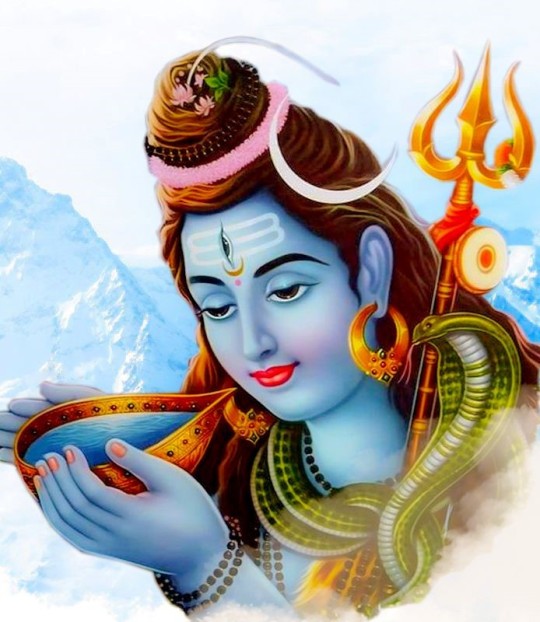
View On WordPress
#Ashtanga Yoga#Brahma#Culture#Dharma#Magh#Mahashivratri#Mahavakya#Natraja#Parvati#purana#Rajas#Rudra#Saivism#Samadhi#Sattva#Shiva#Shivling#Tamas#Upanishad#Vedas#Vedic#Vedopaṇiśadic#Vishnu
0 notes
Text
Lunch ~
Simple kitchari 🍲

This week I am doing a kitchari reset. Seven days of eating food that is easier to digest.
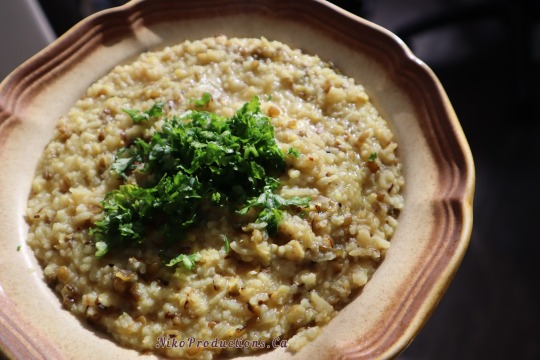
AUGMENTING: basmati rice 🍚
EXTRACTIVE: split mung beans 🫘


#Food #Sattvic #Sattva #Vegetarian #Healing #Ayurveda #Agni #Digestion #Life #Grains #Legumes #Ghee #Seasoning #Spices #Parsley
#healthy food#food#kitchri#kitchari#rice#mung beans#parsley#ayurveda#sattvic#sattva#vegetarian#digestivehealth#digestion#agni
0 notes
Text
Top 5 Benefits of Living in an Integrated Township
In recent years, the concept of integrated townships has gained significant momentum in urban development. These self-contained communities are designed to offer residents a harmonious blend of residential, commercial, recreational, and infrastructural facilities all within the same sprawling complex. Two prominent examples of this modern living trend are the integrated townships in Pune and Hyderabad, where residents are reaping the benefits of this innovative living style. Let us explore the top five advantages of residing in such integrated townships.
1. Convenience and Accessibility
Integrated townships are designed to provide convenience at its finest. With residential units situated alongside commercial establishments, shopping centres, healthcare facilities, and educational institutions, residents can access all their essential needs within a short walk or commute. This not only saves time but also reduces the stress associated with daily commuting in bustling cities. For instance, integrated townships in Pune and Hyderabad offer a range of amenities from grocery stores to fitness centres, making everyday life smoother and more efficient.
2. Enhanced Security
Safety is a top priority for any homeowner. Integrated townships often come equipped with advanced security measures such as gated entrances, 24/7 surveillance, and security personnel. The closed and controlled environment provides a sense of security that is not easily achievable in stand-alone residential complexes. Families can enjoy peace of mind, knowing that their loved ones and belongings are well-protected within the integrated township.
3. Community Spirit
One of the standout advantages of integrated townships is the sense of community they foster. With residents from various walks of life living in close proximity, there are ample opportunities for social interactions and networking. Townships frequently organise events, workshops, and recreational activities that encourage residents to come together, build relationships, and create a strong sense of belonging. This communal spirit contributes to a healthier and happier lifestyle, especially in contrast to the isolation that can sometimes be experienced in traditional residential setups.
4. State-of-the-art Infrastructure
Integrated townships are designed with meticulous planning, incorporating modern infrastructure and amenities. From well-paved roads to efficient waste management systems, these townships are built to cater to every aspect of urban living. Furthermore, they often prioritise eco-friendly practices such as rainwater harvesting, renewable energy sources, and green spaces. Residents can enjoy a better quality of life while minimising their environmental footprint.
They may also have features such as rainwater harvesting, solar power, and waste management systems. This can help you reduce your environmental impact and live a more eco-friendly lifestyle. One such example of a sustainable integrated township is Sattva Global City located off the 10-lane Mysuru-Bengaluru expressway. This Tech Park is designed keeping in mind, low carbon emission. Quarters with natural ventilation and lighting, reuse of treated water from plants, less vehicle usage are some of its measures that an ideal integrated township ensures.
5. Recreational Facilities
Integrated townships prioritise the holistic well-being of their residents. This is evident in the inclusion of recreational facilities such as parks, sports complexes, swimming pools, and gyms. These amenities promote an active and healthy lifestyle, encouraging individuals and families to stay fit and engage in leisure activities without the need to travel far. One of the famous integrated townships in Hyderabad is the Hitech City which is home to several IT companies and offers a variety of amenities, including a multiplex, a food court, and a park. This offers residents the chance to unwind and rejuvenate without leaving the premises. Similarly, ‘The Westin Pune’ is a luxurious integrated township in Pune which offers a variety of amenities, including a five-star hotel, a golf course, and a shopping mall.
Out and out, the benefits of living in an integrated township are abundant and impactful. The convenience, security, community spirit, infrastructure, and recreational facilities all contribute to a well-rounded and fulfilling lifestyle. It offers residents a modern and enriching way of life that is gaining popularity in today's urban landscape. As more cities explore the potential of integrated townships, it is clear that this trend is reshaping the future of urban living for the better.
0 notes
Text
The Veils of Maya
Navigating Illusion in the Quest for TruthThe labyrinthine nature of existence, adorned with its pleasures and pitfalls, has been a subject of deep contemplation for ages. At the heart of many philosophical inquiries in Hinduism lies the enigmatic concept of ‘Maya’. Far from being a mere illusion, Maya reveals layers of truth, each pointing towards an understanding of the universe and our place…

View On WordPress
#Advaita Vedanta#Avidya#brahman#Cosmic Dance#divine play#duality#Hindu philosophy#illusion#Karma#Kleshas#Leela#Maya#Prakriti#Rajas#Sattva#Self-Discovery#Shakti#Spiritual Journey#Tamas#Three Gunas#Transcendence#truth-seeking
0 notes
Link

A Warm Destination Awaiting You With Nature, Beaches, Backwaters, Ayurveda, and Culture. Every traveller should put Kerala, a lovely South Indian region that symbolize tranquilly, on their must-visit list. You will instantly fall in love with the range of tourist sites offered by Kerala tourism. The blue Arabian Sea, vast, luscious tea estates, stunning hill towns, and emerald backwaters beautify these places.

Kerala, a state in India that is situated on the tropical Malabar Coast, is one of the most well-liked tourism destinations in the country. Kerala is renowned in particular for its ecological projects and stunning backwaters, earning it a spot on National Geographic Traveler's list of the "ten paradises of the globe.".

You may find nature, beaches, backwaters, Ayurveda, and culture in this friendly location. Every traveler's bucket list should include Kerala, a delightful South Indian location. Tourists love to visit the "backwaters" region, which is a massive network of interconnecting rivers, lakes, and canals centred around Vembanad Lake.
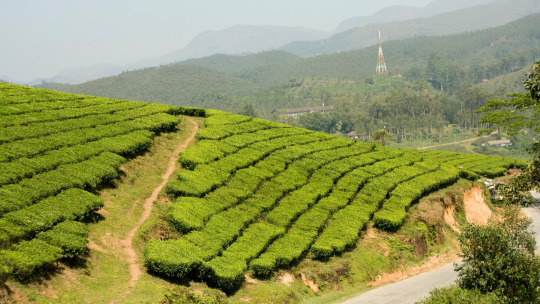
Additionally, historical sites including Padmanabhapuram Palace, Hill Palace, and Mattancherry Palace are visited.The Grand Kerala Shopping Festival was established by the Government of Kerala in 2007 to further promote tourism in the state. Since then, December or January have always been the months for it.
0 notes
Photo
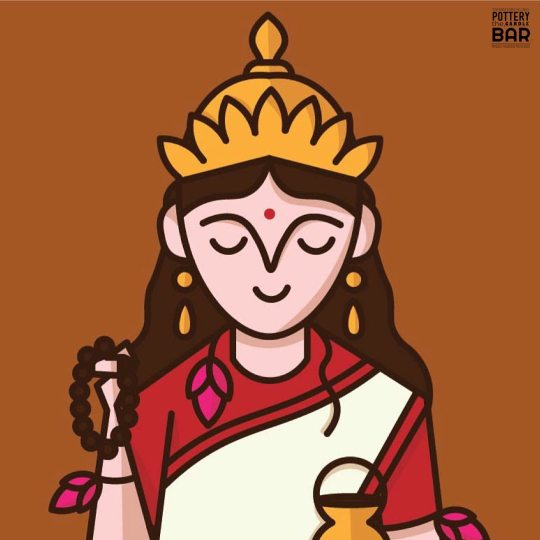
Warm wishes on the auspicious occasion of Jagadhatri Pujo! 🌺🌺 #potterycandlebar #jagadhatripuja #hindu #festival #jagadhatri #kolkata #jagadhatripuja2022 #hinduism #hindugoddess #durga #sattva #maadurga #maakali #goddess #tantra #hindutemple #westbengal #worship #mahadevi #parvati #siddhidhatri #navratri2022 #illustration #illustrationartists #graphicdesign #illustrationofinstagram #bhuvaneshwari #chandannagar #krishnanagar #photoofthemonth (at Pottery, The Candle Bar) https://www.instagram.com/p/Ckc_WCBS-Nf/?igshid=NGJjMDIxMWI=
#potterycandlebar#jagadhatripuja#hindu#festival#jagadhatri#kolkata#jagadhatripuja2022#hinduism#hindugoddess#durga#sattva#maadurga#maakali#goddess#tantra#hindutemple#westbengal#worship#mahadevi#parvati#siddhidhatri#navratri2022#illustration#illustrationartists#graphicdesign#illustrationofinstagram#bhuvaneshwari#chandannagar#krishnanagar#photoofthemonth
0 notes
Text

Joga droga do transcendencji. Agata Świerzowska.
0 notes
Photo

#sattvic #sattvicfood #ayurveda #vegan #yoga #plantbased #healthyfood #foodphotography #healthylifestyle #sattva #vegetarian #food #indianfood #foodie #meditation #foodblogger #ayurvedalifestyle #sattvicdiet #spirituality #instafood #nutrition #catalunya #one #sattvik #veganism #dharma #india #foodstagram #ayurvedic #yogapractice https://www.instagram.com/p/CjA9pPTP_-Y/?igshid=NGJjMDIxMWI=
#sattvic#sattvicfood#ayurveda#vegan#yoga#plantbased#healthyfood#foodphotography#healthylifestyle#sattva#vegetarian#food#indianfood#foodie#meditation#foodblogger#ayurvedalifestyle#sattvicdiet#spirituality#instafood#nutrition#catalunya#one#sattvik#veganism#dharma#india#foodstagram#ayurvedic#yogapractice
1 note
·
View note
Text
The Power of Mantra in Jyotish: Liberating the Mind through Sacred Sounds
In the vast expanse of Vedic wisdom, the concept of mantra stands out as a profound tool for transformation and liberation. Rooted in the ancient Sanskrit language, the term 'mantra' is derived from the root 'man', meaning 'to think', and the suffix 'tra', indicating tools or instruments. Thus, a mantra is fundamentally an instrument of the mind, designed to free it from the shackles of the mundane and elevate it to a realm of higher consciousness. In Jyotish, or Vedic astrology, mantras are revered for their ability to align individual energies with cosmic vibrations, fostering harmony, balance, and growth.
Manasa Trayate: Freeing the Mind
The essence of mantra chanting lies in its capacity to liberate the mind - 'manasa trayate'. This liberation is not merely an escape but a profound release from the cycles of desire, fear, and suffering that often bind the human experience. Through the repetition of sacred syllables, mantras quiet the incessant chatter of the mind, offering a glimpse into the serene depths of our true nature.
The Dance of the Gunas
Central to the understanding of the mind in Vedic philosophy are the three gunas - Sattva, Rajas, and Tamas. These qualities or modes of nature describe the fabric of our mental and emotional states. Tamas represents inertia and darkness, Rajas denotes activity and passion, while Sattva is associated with purity, wisdom, and harmony. The mind, influenced by these gunas, shapes our perceptions, actions, and ultimately, our destiny.
Sattva Guna: The Beacon of Liberation
The goal of chanting mantras is to cultivate Sattva guna, the quality of harmony and balance. Sattva is the light that dispels the darkness of ignorance, leading the mind towards clarity, peace, and liberation. As we immerse ourselves in the vibrational energy of mantras, we subtly shift the balance of the gunas within us, reducing the dominance of Rajas and Tamas, and amplifying the presence of Sattva.
In the realm of Jyotish, mantras are prescribed as remedies to counteract the negative influences of planetary alignments and to enhance their positive aspects. Each planet resonates with specific frequencies, and chanting the associated mantras can help attune our energy to these cosmic forces, facilitating healing, transformation, and the fulfillment of our potential.
Chanting as a Path to Higher Consciousness
The practice of mantra chanting is a journey towards self-realization. It is an act of focusing the mind, not on the transient and the external, but on the eternal truths that lie within. As we chant, we are not just reciting words; we are invoking the very essence of the universe, connecting with a force that transcends time and space.
The power of mantra lies in its ability to transform the mind from a state of bondage to one of freedom. It offers a path to transcend the limitations imposed by the gunas, guiding us towards Sattva, where true liberation resides. In this state of elevated consciousness, we discover the unity of all existence, the interconnectivity of the cosmos, and the boundless potential of the human spirit.
0 notes